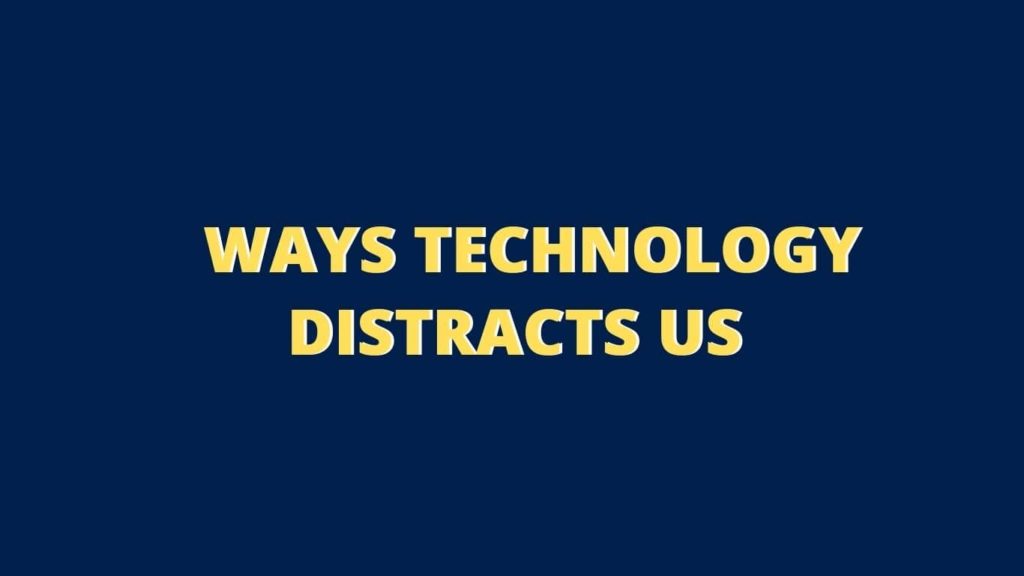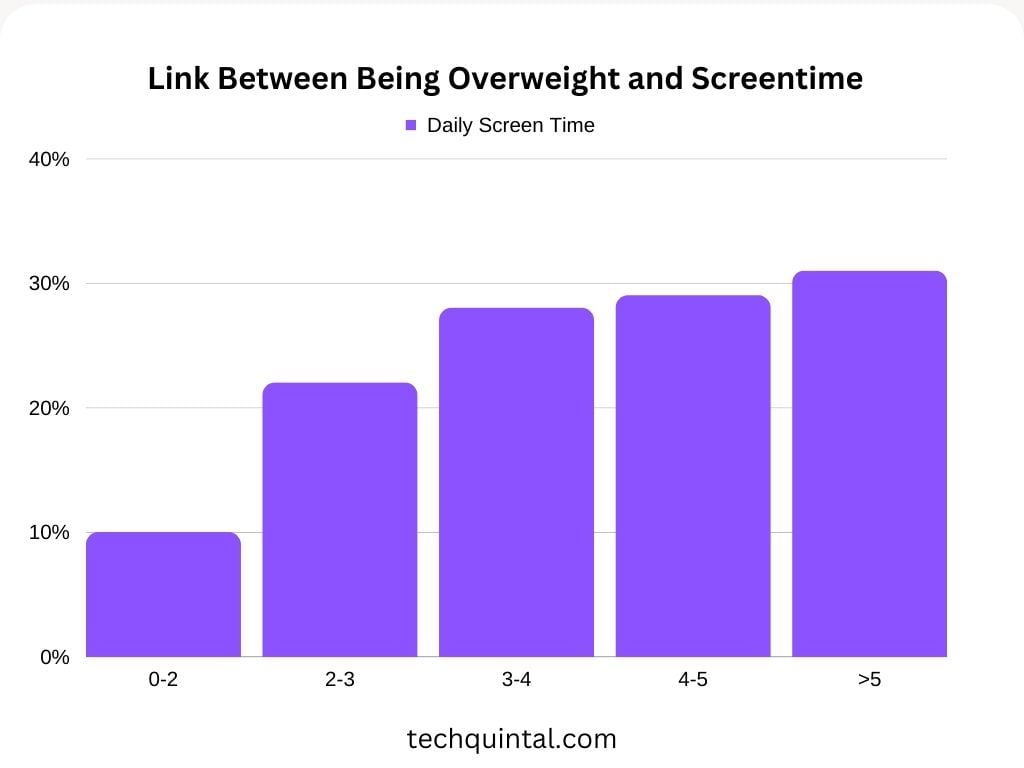
While modern technology can help improve productivity, it can also kill it. Multi-tasking is a myth, at least in humans. Yes, we’re capable of doing two or more things simultaneously, but they must be simple. Otherwise, our brain must switch between tasks rapidly, so for one to get undivided attention, others have to suffer. This leaves us incapable of dividing our brainpower equally or into set percentages to two or more processes like computers can. But what exactly causes our efficacy to plummet nowadays? That’s precisely what we’ll determine as we analyze how technology distracts us. Let’s begin.
Quick Answer for How Technology Distracts Us
Technology distracts us by creating an unending flow of information that monopolizes our attention. This constant digital interruption and our own urge to stay connected can reduce productivity and weaken our ability to concentrate on singular tasks.
Ways Technology Distracts Us

1. Social media
We’ll begin with the most obvious way technology distracts us – the existence of social media. And while there are pros and cons to social media, plummeting productivity is one of the biggest drawbacks. As of early 2021, 97% of Americans own a cell phone and close to 85% of those own a smartphone.
As such, they’re all prone to checking for updates every few minutes. Smartphone users have an additional source of distractions – high-resolution consuming content. This can lead them to procrastinate for hours on end. Even people that try their best are disrupted by sound or buzzing notifications. Of course, in our analysis of why social media is bad, we concluded it preys on human psychology.
2. Distractions in Education
We aren’t finished with social media. We merely placed it alongside its biggest userbase – students. They suffer positive and negative effects of technology in education, the latter of which results in coined terms such as academic distraction. It is defined as the potential of internal stimuli (wandering mind) or external stimuli (social media, smart devices, computers) to interrupt students’ studies.
Studies into digital distraction in education
A 2015 study by Carrier, Rosen, Cheever, and Lim found that media multitasking from laptop use in a class environment negatively impacted academic performance measures by GPA, as well as learning. They attributed this to browser design, which allowed opening tens of tabs at once. A 2020 study by Alghamdi, Karpinski, Lepp, and Barkle also noticed a connection between the availability of free wireless Internet throughout campuses and the use of digital devices for non-academic purposes during classes.
Other studies examined direct effects. And, they all agree students’ comprehension and data retention levels shrunk significantly. Even worse, they don’t have to be users themselves. A 2013 study by Sana, Weston, & Ceped showed a reduction of test scores in students who could see the screen of other students’ laptops.
Taking notes
Modern technology in education is a double-edged sword for note-taking during class. It allows students to take exhaustive notes by typing or recording audio/video. As a result, students are often unfocused, knowing they can study later. What’s more, they usually distract others around them. In contrast, taking notes in longhand, even with modern fast handwriting pens, according to a 2014 study by Mueller and Oppenheimer, requires deeper brain processing because of paraphrasing.
Because they cannot write as fast as type, students must “translate” spoken or written words into notes. While good for information retention and requires less studying later, it distracts students from the ongoing lecture.
3. Traffic
While it helps keep us safe in traffic, technology distracts us as well. Car accident reports show that distracted driving is one of its most common causes, even though it isn’t all tech-related. Moreover, most car crashes are caused by disruptions – momentary disturbances that may or may not stop someone’s productivity. But due to the presence of other people in traffic or nearby, on foot or other vehicles, a moment is all it takes.
Additional obstruction comes from smart devices present in vehicles, encouraged through mounts or built-in gadgets. Vehicles also have too many shining lights, sound notifications, and fancy features. All of these divert drivers’ attention and take their eyes off the road and hands off the wheel. Also, more and more vehicles now come with auto-pilot (check new technology inventions) that can also automatically park. This relaxes drivers into a false sense of safety.
4. Relationships
The rapid development of the Internet widened the gaps between generations and members of the same generation. The data supports it – in early 2021 data shows people spend 155 minutes on mobiles and 37 minutes on computers daily, per capita, per device. To see it in practice, take a building block of relationships – eating a meal together. Instead of interacting amongst each other, participants usually entertain themselves with devices, whether smart devices, computers, or TVs.
So, while physically present, they’re mentally absent. This can be beneficial if done jointly. But solo technology use prevents people from paying attention, reduces their attention span, and diverts them from bonding with others. As a result, researchers coined the term, phubbing, from the words “phone” and “snubbing” in 2019. It’s defined as engaging with one’s phone while interacting within a social environment.
5. Workplace
Research into productivity in the workplace shows that office distractions consume about 2 hours of a workday per person alone. Tests have also concluded that workers switch activities every 3 minutes, e.g., can shift focus up to 20 times per hour but could only focus for 11 minutes at a time (time without distractions per person). The same studies show that once distracted, a worker needed between 23 and 25 minutes to return to the task fully, if at all.
Co-worker interaction and job performance
Co-workers can be the reason technology distracts us in the workplace. They tend to call, text, send e-mails, or even worse, pop up to show you irrelevant things as you’re trying to focus. What’s more, they often invite you to lunch or a gathering you feel obligated to go to, diverting you from your original plans. Even worse, once physically present, technology can erode co-worker relationships in ways we mentioned above, making gatherings fruitless.
Job safety
The cause of job accidents is often inexperience or distraction, but also both, simultaneously. Jobs that involve traveling or transport have the same downsides we mentioned under traffic. Those that don’t usually rely on technology to provide failsafe against human error, lack of knowledge, or lack of focus.
The thing is, technology can and does fail. And while that failure can be shrugged off in some professions without ill effects, in others, it carries disastrous, long-term, or even fatal consequences.
Tips to Reduce Technological Distractions
Technological distraction is a fact that has been plaguing our society for quite some time now. It is more prevalent among adults and the younger generation and affects almost every aspect of our social lives. In fact, if we look at recent studies, the data clearly shows that technology such as a smartphone is the leading cause of distraction in students, where almost 68% of the students find themselves distracted by the ringing of a mobile phone.
The technological destruction is also evident in the teachers. Another study done by Elena Neiterman and Christine Zaza found that approximately 68% of teachers have a negative outlook on the use of smartphones, while 32% find themselves distracted by laptops. Digital distraction is everywhere, and it affects everyone, as showcased in the following video.
This is why we have brought you some tips on how to reduce such technological distractions. Take a look:
1. Limiting your Screen Time
You can always try and limit your screen time. While we understand the impulse to check your smartphone every couple of minutes, it is not worth it, especially if you are in class or at a workplace. While completely terminating the habit is hard, it is still manageable to limit the use of digital devices. There are now even apps that can help you with this.
In addition to just distraction, screentime is also related to health conditions and obesity.

2. Switch off your smartphone or at least disable notification
One of the most obvious solutions would be to simply turn your phone off, but we know that it is not practical. And also the fact that phones are somewhat of a necessity because they are useful. But, you can at least disable notifications when busy so as to prevent any distraction when undertaking an important task.
3. Limit your social media usage or replace it with other activities
Various studies have shown social media to be the cause of mental health issues like depression, anxiety, and isolation. It is also a contributor to cyberbullying and trolling. People often find themselves striving for social media attention just because of phenomena like FOMO.
Thus, it is paramount that you at least try to distance yourselves from it. You can also try to fill in the gap left behind by social media by doing something productive or taking up a hobby.
4. Stick to a schedule
Sticking to a schedule can also help curb your technological distractions. If you are self-disciplined enough, you can make it easier on yourself by dedicating specific time to online activities. You can also make a to-do list and keep track of your chores or work responsibilities in order to motivate yourself. Or you can take aid from several apps that can help you plan your day, including time for digital distractions.
5. Self Awareness
The final and most important aspect of reducing digital distractions is being self-aware. Unless and until you recognize it as a problem, no tips or solutions will work. Thus, start by accepting that technology can be a distraction.
Different Technologies and Distraction
Here is a table depicting the impact of various technologies when they are a distraction:
| Technology | Description | Result |
|---|---|---|
| Mobile Phones | They are a tool for mobile communication and have internet access. | Can cause mental health issues and prevent you from being productive. |
| Video Games | Software that allows users to play games | It excels at promoting violence, instilling a sense of superiority, and being addictive. |
| Social Media | A platform to facilitate interpersonal communication | Can lead to self-isolation, increased trolling and other cyber threats, and FOMO. |
| Internet | A public network of interconnected computing devices | A plethora of information, making it much easier to get lost here. |
| Online Shopping | Services that allow users to purchase stuff online | Leads to mindless scrolling and overspending due to impulse purchases. |